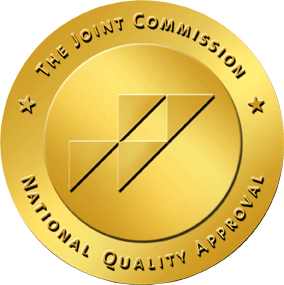
Some common things that people with BDD do are frequently looking at themselves in the mirror, looking for reassurance from others or asking others how they look. Someone suffering from BDD may seek medical help in order to change how they look such as plastic surgery or dental work. Although, this may help the person feel better temporarily, it is not a permanent solution to stop the feelings that they are having and the person inevitably finds something else wrong.
Body Dysmorphia Disorder
We live in a world that is obsessed with the way we look but what happens when the way we think we look takes over our life?
Let’s talk about BDD, Body Dysmorphic Disorder. What is it? How do we know we have it, and what do we do about it? Body Dysmorphic Disorder or BDD is a mental disorder in which you can’t stop thinking about one or more perceived effects or flaws in your own appearance. A flaw that to others they may never know is there. Not noticeable at all!
But to someone with BDD it could be so extreme and obvious that they feel ashamed and anxious and avoid social situations because of it. BDD share some of the features with eating disorders and obsessive-compulsive disorders but not the same. It’s not an eating disorder. And this is where we make the distinction. BDD is similar to eating disorders in that both involve a concern with body image.
However a person with an eating disorder worries about weight and the shape of the entire body while a person with bdd is concerned about a specific body part or a specific flaw. Acne, scars, hair, veins or vascularity, redness or cellulite on the body, can be some areas of fixated for someone with BDD. Say someone is fixated on the look of their hair or skin. They might spend hours in the mirror obsessing over a scar or blemish. Maybe they are even late to work because of how long they are spending focusing on that area putting makup on it making it just right.
This can be problematic because it can greatly impact your life as you compare yourself to others hide or undergo risky surgeries or treatments that change the way you look.
So what do we do about it? What do we do if we have BDD?
If any of this sounds familiar, talk with a supportive family member or friend. Speak with your doctor about your concerns and seek out help from your therapist and dietitian It might feel like these things will never change but we can shift this and we can make peace with our body and our appearance.
People with this disorder often find these to be the areas of most concern:
- Skin problems- wrinkles, scars, acnes or other skin blemishes
- Features with the face or skin- most likely involving the nose or other skin features that include size or shape
- Hair- head or body hair including the loss of hair
- Body Weight- obsession with body size or muscle tone
People with BDD
BDD is characterized by people who obsess or constantly check their appearance or preoccupation with a slight defect in their looks.
This disorder can manifest in many ways and people will worry about different parts of their body. Often, people focus on their skin, hair, chest, nose or stomach. For most people, the perceived issue or defect is miniscule in the grand scheme of things, but the person suffering from it is always thinking about it. They cannot move on with their life without thinking about this problem and it can cause emotional distress to the point of needing counseling or treatment.
Most people with BDD develop the syndrome in their teen years or adolescents and it effects both men and women almost equally. In the United States there are about 2.5% of males and 2.2% of females that suffer from BDD and usually begins to occur in adolescents aged 12-13 years of age.
There are no clear causes of BDD but there is research that shows that environmental and biological factors do play a role in whether you will have the disease.
Symptoms of BDD
Signs and Body Dysmorphic Disorder symptoms of BDD include:
- Being obsessive or overly preoccupied with the specific flaw or issue
- Comparing yourself to others often
- Being a perfectionist
- Avoiding social situations out of fear of looking bad
- Strong beliefs that you have a problem or flaw that makes you ugly or not beautiful
- Thinking that others take notice of your appearance in a bad way or that people may mock you
- Constantly seeking approval from others
- Seeking medical professionals for procedures to fix the perceived flaw
- Trying to hide your flaws with clothes, makeup or styling
- Frequently grooming, checking the mirror or skin picking
Risk for BDD
The cause for Body Dysmorphic Disorder is still very unclear but there are underlying factors that may contribute to the disease. Although, there is not a lot of research that depicts the cause of BDD, there is preliminary evidence that shows sexual, emotional and physical abuse in children to be associated with the disease and it often begins during the adolescent stage. In those studied for BDD, the most common characteristic was for those who were maltreated during their childhood.
Social Factors- social interactions during childhood can cause a significant impact on a person’s thoughts or perceptions on how they are feeling. Physical aspects such as acne or skin appearance can cause someone to have very negative thoughts about their body.
Cultural Influences- Countries such as the U.S., Canada, Australia, China and Japan conducted a study to determine the influence of culture on BDD and found that the prevalence rates were similar between American and German students. There tends to be differences in what type of body parts are of concern which is dependent upon the social beauty norms or standards for the country.
Treatment for BDD
Medications – Medications including SSRI’s or serotonin reuptake inhibitors are an antidepressant that can help to decrease the negative Body Dysmorphic Disorder symptoms associated with obsessive compulsive disorder.
Cognitive Behavior Therapy – Several steps in this type of therapy include:
- The patient is asked to attend social situations and not allow them to cover up their “defect.”
- A therapist will help the patient to find new ways to handle the issue that they have and discuss how they are feeling about it. If there is compulsive behavior associated, they will help them find new coping strategies.
- The therapist will discuss how the patient is feeling about their appearance and allow them to not let it bother them to the same extent.
Preventing Relapse
Once treatment is completed it’s important to think about the situations you may be in in the future that could trigger a relapse. A therapist is available to help determine what these challenges may be and how to overcome them. Even after treatment ends it’s important to follow up with your therapist to continue discussing the hard times that may cause relapse to happen.
Recover from BDD In Los Angeles
Body dysmorphia is a condition that is no less painful than any other mental health illness. Those who have it are often experiencing a number of other Body Dysmorphic symptoms underneath the guise of being perfect, such as low self-esteem, pervasive sadness, feeling emotionally drained, and suicidal thoughts. However, our body dysmorphia treatment in Los Angeles can offer those individuals the opportunity to get in control of their behaviors in ways that support their positive mental health.
If you are struggling with body dysmorphia, know that you are not alone. About 1 in 50 people in the United States have this condition, as it is extremely pervasive. But you do not need to remain trapped in your dysmorphia. You can make the changes you need to live happily.
Do not wait. Reach out to our caring professional staff today to learn more about our Los Angeles body dysmorphia treatment program.












